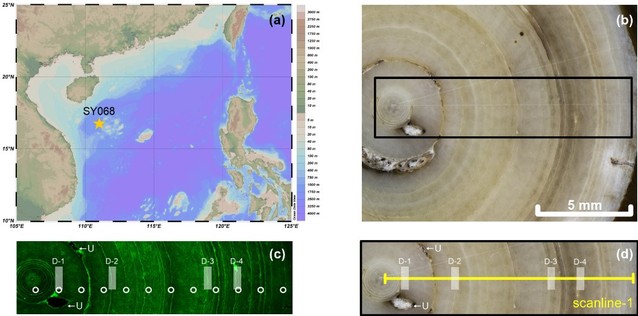zhiwei zenga , haowen danga *, enqing huanga , xiaolin mab , xiangtong huanga , le konga , ce yanga , xiaoli quc , liping zhoud , zhimin jiana
a state key laboratory of marine geology, tongji university, shanghai 200092, china
b state key laboratory of loess and quaternary geology, institute of earth environment, chinese academy of sciences, xi’an 710061, china
c state key laboratory for manufacturing system engineering, xi’an jiaotong university, xi’an 710049, china
d laboratory for earth surface processes, department of geography, peking university, beijing 100871, china.
* corresponding author, e-mail: hwdang@tongji.edu.cn
abstract:
recent deep-diving expeditions in the south china sea (scs) discovered abundant indigenous cold-water corals [1]. cold-water corals, preferentially inhabiting the low-latitude intermediate and deep waters with hard substrates and a cool water temperature, have great potential to be applied in researches of the ocean interior by providing high-resolution records [2, 3]. among cold-water corals, the bamboo coral (order: gorgonacea, family: isididae) may be the most promising group whose skeleton keeps sequential track of intermediate water conditions over a multi-decadal interval, but the paleoceanographic study of bamboo coral is still a vacancy in the scs. here we report the first cut-and-try experiments on the chronology and composition of a bamboo coral from the intermediate water of the scs, exploring its paleoceanographic potentials in the subtropical western pacific region.
full article:


